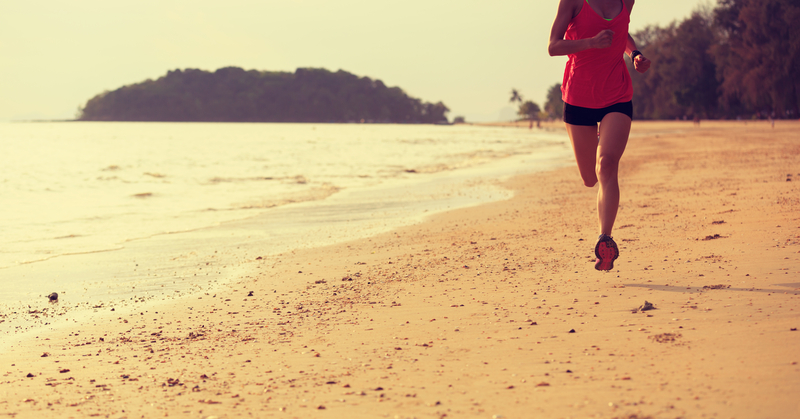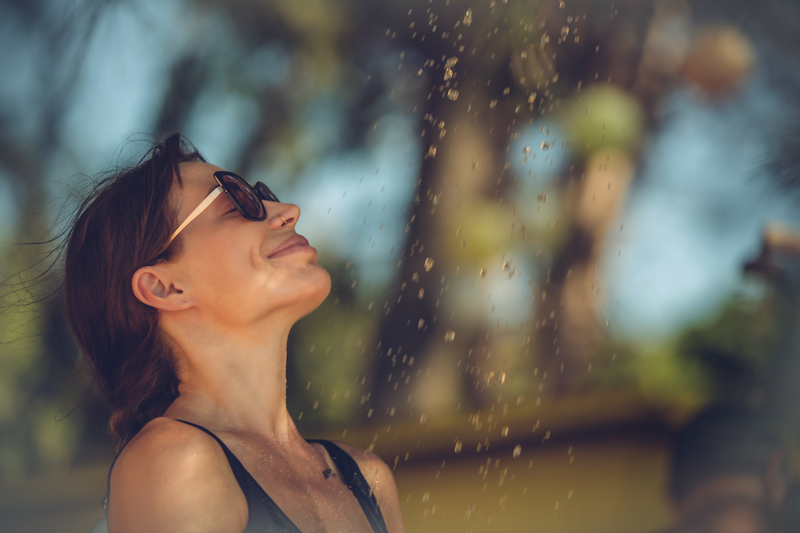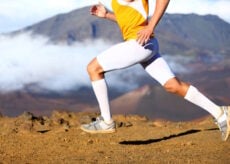7 Ways to Sweat Smart and Prevent Heat Rash

In many parts of the country, summer is starting to wind down. The kids are getting ready for school, and before we know it, we’ll be trading out the summer shorts for cozy cardigans. So, before the season slips away, getting outside for workouts and fun is a great way to soak up the warm weather. There is, unfortunately, a common skin irritation that can put a damper on summer fun: heat rash. Also known as prickly heat or miliaria, heat rash is a distantly uncomfortable skin condition that can affect people of all ages. So, how can you prevent heat rash?
What Is Heat Rash?
Heat rash occurs when sweat gets trapped beneath the skin, causing inflammation and irritation. If you’ve ever experienced it, you know it’s not fun and can be downright painful.
It typically happens when it’s hot and humid, and the sweat glands get blocked, causing small bumps on the skin. While many people only think of heat rash in babies (due to their underdeveloped sweat glands), adults can also experience it, especially in areas where there’s skin-to-skin contact.
Heat rash in adults is primarily caused by excessive sweating, which is only natural if you’re working out hard in the summer sun, especially if you’re wearing tight clothing like leggings, bike shorts, and other fitness gear.
The condition is most common in areas that sweat a lot, where the sweat and heat can then become trapped. For instance, under the breasts, the groin area, the back, chest, and abdomen, the armpits, and the neck and shoulders are common locations.
Heat rash is pretty easy to identify. It has a distinct appearance, including small red or pink bumps on the skin that cause a prickly, itchy, stinging, or burning sensation. Ouch! It may also cause mild swelling. And once it starts, further sweating or friction only makes it worse.

What to Do If You Experience Heat Rash
If you’re dealing with heat rash, there’s good news: it’s generally not serious and can be taken care of with simple, natural solutions in your own home.
The first step to get relief is to cool down. You’ll want to lower your body temperature by moving to a cooler, preferably air-conditioned environment. You can also cool down by taking a cool or lukewarm shower. Or consider soaking in a cool or lukewarm bath with a cup of finely ground oatmeal for 15 to 20 minutes for deeper relief from the itching and irritation.
Next, pat down the affected area with a clean, dry, soft, and absorbent towel. However, avoid rubbing the skin, as that can lead to further irritation. You may also want to apply a thin layer of some soothing aloe vera to the area to help reduce the inflammation in the skin. Aloe may help reduce the redness and discomfort. Allow the skin to fully dry, and then consider lightly dusting the area with cornstarch or other powder designed to help absorb moisture and reduce friction to help prevent heat rash from getting worse.
Also, drink plenty of water to help your body better regulate temperature and prevent excessive sweating. This can not only help ease symptoms; it may help you recover faster.
Choosing loose, breathable clothing (i.e., made with natural fibers like cotton, bamboo, TENCEL, linen, or wool) and sleeping on lightweight bedding with a fan or AC may also help you feel more comfortable. And, by staying cool, you’ll prevent further sweating, which can help ease the heat rash discomfort faster.
While heat rash can be uncomfortable, it’s fortunately usually short-term, typically clearing up all on its own within a day or two. However, if the rash doesn’t improve after a few days of home treatment, or if the rash becomes severely inflamed, with intense pain, swelling, and pus-filled blisters, or if you develop a fever or chills or the rash spreads to other parts of the body, it’s time to consult your healthcare provider. These symptoms could indicate an infection and could require further treatment.
How to Prevent Heat Rash
For those of us who love to move our bodies and get our sweat on, exercising in hot and humid conditions is a double-edged sword. Yes, it’s important to stay active. However, physical exertion in those conditions can vastly increase the risk of developing heat rash. Combine that with typical tight-fitting fitness gear (e.g., leggings, bike shorts, or sports bras) that’s made with less-breathable fabrics (e.g., tight-knit polyester or nylon, rayon, and elastic), and the risks of heat rash are increased.
Luckily, there are a few simple steps to help lower that risk. These include:
- Choosing the best times to exercise, such as early morning or late evening when the temps are lower.
- Wearing breathable fabrics. A lot of fitness wear is made with moisture-wicking fabrics that allow sweat to evaporate more quickly.
- Taking breaks. Allow your body to cool down if you notice you’re sweating excessively. Use a clean towel to remove some of the sweat and pat the skin dry.
- Drink lots of water. Staying hydrated before, during, and after exercise helps regulate body temperature.
Other ways to help prevent heat rash, whether you’re exercising or not, include:
- Staying cool and avoiding prolonged exposure to heat and humidity. That may include finding shaded areas or heading indoors into the AC or standing near a fan, especially when the sun is at its peak.
- Using antiperspirant powder, especially in areas that tend to sweat a lot, like the groin, under the breasts, and in the armpits.
- Avoiding heavy creams or ointments, as they can block sweat glands and make heat rash worse. Lotions or sunscreens are fine and often recommended. Just choose those that are light and water-based to moisturize the skin and protect it from sun damage.
By following these simple steps, you can better enjoy the rest of the sun-filled days of summer, staying active without the discomfort that comes with heat rash. Stay cool, stay dry, stay smooth!





